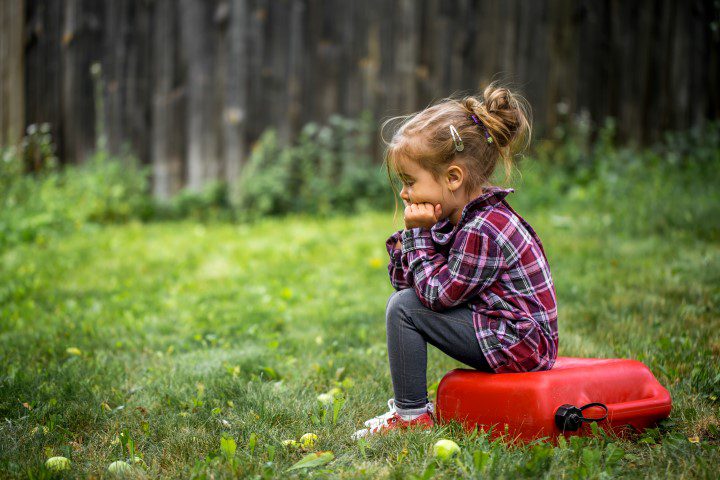Anxiety & Fear / Calming Children, Essential Kids Blog, Press & Online, Separation Anxiety
Invisible enemy of anxiety a real worry

In the past decade, we’ve seen large numbers of children diagnosed with depression and behavioural disorders such as ADHD, ADD and oppositional defiance disorder. Research shows though that the symptoms associated with these disorders are often an indicator that a child is suffering from anxiety.
Although anxiety is a normal healthy emotion, essential for our survival in fact, it becomes a problem when it impairs our wellbeing. A few years back, I attended an excellent conference in Canada – The Development of Children’s Mental Health: How Do We Become Who We Are? – and anxiety was a hot topic.
Anxiety is the most significant mental health issue in childhood, and yet it frequently goes undetected and untreated – it truly is an invisible enemy. It can begin as early as age two but (like attention disorders) we see a significant rise when children enter the school system and many will go on to suffer anxiety their whole lives unless its addressed.
Dr Lynn Miller from the University of British Columbia has found that as well as common and known symptoms of anxiety (stomach aches, headaches, difficulty sleeping, avoiding school, nail biting and physical reactions such as increased heart rate or breathing), there are many frequently overlooked symptoms – such as:
- Angry outbursts
- Oppositional and refusal behaviours
- Temper tantrums
- Aggression
- Attention seeking behaviours
- Hyperactivity and difficulty sitting still
- Attention and concentration problems
- Scholastic underachievement or excessive resistance to doing work
- Frequent visits to school nurse
- High number of missed school days
- Difficulties with social or peer group.
The truly worrying aspect of this is that Dr Miller says many anxious children who are misdiagnosed with other disorders are medicated accordingly with drugs such as the much-discussed Ritalin.
Dosing an anxiety ridden hyperactive child with a drug like this will only make things worse and send that child spiralling into a long-term journey of failure to thrive at school, in friendships and in life.
The most common anxiety in small children is separation anxiety — which we all expect — and which usually kicks in at about six to eight months old in babies, but can last until a child is five years old or beyond.
While separation anxiety is normal, it’s important for parents of sensitive children to really be on the lookout for when it becomes excessive.
Symptoms of separation anxiety disorder include:
- Worry about harm coming to loved ones or separation due to bad event
- Persistent reluctance to go to preschool/school, to be alone, to be without adults or loved ones (e.g. at home or when going to sleep)
- Repeated nightmares with themes of separation
- Physical complaints/symptoms when separated or anticipating separation
- Obvious distress.
Social anxiety is another common problem among children and particularly adolescents, where children might be overly shy or withdrawn, or worry excessively about what others might be thinking or saying about them.
Basically, whatever form it comes in, if your child’s anxiety causes them to behave in ways that interfere with their day-to-day life and wellbeing or obstructs others, they may need help (I think The Brave Program developed by the University of Queensland is an excellent place to start).
Taking on anxiety before it gets out of hand
As parents, one thing we can do to prevent anxiety becoming an issue is make childcare choices that suit our children, particularly being mindful of our sensitive children or children under two who are often developmentally unable to manage environments that cause them stress.
These children really need a ‘mothering’ influence, even when mum has to go back to work, so I encourage parents to co-parent around work schedules as much as possible, and seek care with trusted relatives and friends or family day care.
We can also lower anxiety levels in our households by slowing down, leaving plenty of time for transition between activities, having good routines particularly around eating and sleeping, and above all making time for silence and relaxation.
Silence, stillness and relaxation are often last on our to-do lists in this chaotic world but research now provides evidence that mindfulness activities really do work when it comes to alleviating anxiety.
It’s also something I’ve seen time and time again in working with schools, children and families for the past 30 years — teaching children how to access calm absolutely improves their academic performance and makes them happier, kinder children.
Doing this may involve meditation, laying down and listening to a calming music or guided relaxation, or simply laying on the grass with the kids and listening to the sounds around you.
Dedicating just 10 to 15 minutes a day to having a little more calm and connectedness in your household is a great first step to helping for your anxious children, and without a doubt the benefits will extend to everyone in your family.
Image credit: ©️ puhimec /Adobe Stock – stock.adobe.com




 Manage Membership
Manage Membership